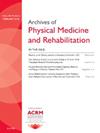中央研究基础设施的发展,支持跨学科临床研究和在医疗环境中采用循证实践
IF 3.6
2区 医学
Q1 REHABILITATION
Archives of physical medicine and rehabilitation
Pub Date : 2025-05-01
DOI:10.1016/j.apmr.2025.03.008
引用次数: 0
摘要
在非学术环境中,各级培训和经验的医疗保健专业人员都有能力发现知识差距,发展新的研究思路,并调整已知的方案以满足患者的需求。然而,执行这些想法往往是令人生畏的,涉及数小时的自由支配时间和精力。为了解决这个问题,Gaylord Specialty Healthcare投资开发了一个集中的研究基础设施——米尔恩医疗保健创新研究所。Milne Institute支持Gaylord的医疗保健专业人员开展临床研究、循证项目(ebp)和质量倡议(QIs),以改善患者护理和结果。为了抵消研究的临床外性质,米尔恩研究所的全职研究人员不仅指导、教育和指导盖洛德的医疗保健专业人员,而且还在项目的所有阶段为他们提供帮助,包括:想法发展;研究设计;IRB申请准备;参与者注册;数据收集和分析;编写和提交会议摘要和手稿。自2020年以来,这一重点增加了Gaylord每年平均获得irb批准的研究项目数量(从7个增加到24个),接受的会议提交(从4个增加到10个)和接受的手稿(从0个增加到3个)。此外,这项投资还带来了更广泛的创新文化,目前有52名医疗保健专业人员代表14个不同的部门,在一项或多项经irb批准的研究中担任共同研究者,还有更多的员工以其他方式支持研究、QIs和ebp。通过采用集中的研究基础设施,可以创造一种研究和创新的文化。这使得医疗保健专业人员能够进一步参与有意义的活动,并通过开发新的ebp来改善患者的治疗效果。本文章由计算机程序翻译,如有差异,请以英文原文为准。
Development of a Central Research Infrastructure that Supports Interdisciplinary Clinical Research and the Adoption of Evidence-Based Practices in the Healthcare Settings
Healthcare professionals in non-academic settings, at all levels of training and experience, have the ability to identify gaps in knowledge, develop novel research ideas, and adapt known protocols to meet patient needs. However, acting upon these ideas is often daunting, involving hours of discretionary time and effort. To address this, Gaylord Specialty Healthcare invested in the development of a centralized research infrastructure–The Milne Institute for Healthcare Innovation. The Milne Institute supports Gaylord's healthcare professionals in conducting clinical research, evidence-based projects (EBPs), and quality initiatives (QIs) to improve patient care and outcomes. To offset the extraclinical nature of research, the Milne Institute's fulltime research staff not only mentor, educate, and guide Gaylord's healthcare professionals, but they also assist them through all project phases, including: idea development; study design; IRB application preparation; participant enrollment; data collection and analysis; and preparation and submission of conference abstracts and manuscripts. Since 2020, this emphasis has increased Gaylord's annual average number of IRB-approved research projects (from 7-to-24), accepted conference submissions (from 4-to-10), and accepted manuscripts (from 0-to-3). Further, this investment has resulted in a broader culture of innovation, with 52 healthcare professionals, representing 14 different departments, currently acting as a co-investigator on one or more IRB-approved research studies, with even more staff supporting research, QIs, and EBPs in other ways. By adopting a centralized research infrastructure, a culture of research and innovation can be created. This allows healthcare professionals to further engage in meaningful initiatives and improve patient outcomes through the development of new EBPs.
求助全文
通过发布文献求助,成功后即可免费获取论文全文。
去求助
来源期刊
CiteScore
6.20
自引率
4.70%
发文量
495
审稿时长
38 days
期刊介绍:
The Archives of Physical Medicine and Rehabilitation publishes original, peer-reviewed research and clinical reports on important trends and developments in physical medicine and rehabilitation and related fields. This international journal brings researchers and clinicians authoritative information on the therapeutic utilization of physical, behavioral and pharmaceutical agents in providing comprehensive care for individuals with chronic illness and disabilities.
Archives began publication in 1920, publishes monthly, and is the official journal of the American Congress of Rehabilitation Medicine. Its papers are cited more often than any other rehabilitation journal.

 求助内容:
求助内容: 应助结果提醒方式:
应助结果提醒方式:


